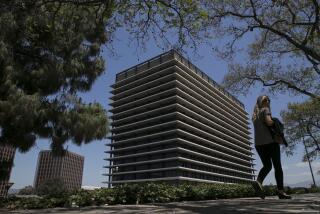DWP Seeks to End Rationing April 1 : Conservation: Voluntary reductions will still be sought. Council and mayor are expected to act quickly on the commission’s proposal.
- Share via
The Los Angeles Department of Water and Power Commission on Thursday unanimously approved a resolution to end mandatory water rationing April 1 and to begin a voluntary program aimed at conserving 10%.
The commission’s recommendation needs approval of the City Council and Mayor Tom Bradley, who Tuesday recommended lifting the restrictions. The council and the mayor are expected to act quickly on the DWP resolution.
“Our water supplies are at an overall level of about 90% of normal,” said DWP commission President Mike Gage. “So if customers continue to save at least 10%, we will be able to meet expected demand.”
The DWP estimates that it will save $1.8 million in administrative costs by eliminating the mandatory program. A 9-cent-per-billing-unit surcharge to make up for revenues lost during the drought will remain in effect as long as the city requires conservation--whether mandatory or voluntary--of 10% or more. The average homeowner uses about 18 billing units of water a month.
Jerry Gewe, DWP water resources engineer, said he believes that residents will voluntarily conserve more than requested, up to 15%.
The commission’s recommendation follows the state Department of Water Resources announcement Monday that it will increase to 35% from 20% the amount of water it will deliver to members of the State Water Project. On Tuesday, the Metropolitan Water District voted to roll back conservation goals for its 27 member agencies to 17% from 31%.
The DWP expects to purchase about half of the water the city needs from the MWD. The city’s own supplies in the Owens Valley are at about 70% of normal.
The city began its mandatory conservation program in April, 1990, when customers were asked to cut use by 10% from 1986 levels or face financial penalties. In May, 1990, the conservation level was raised to 15%. Since then, residents have conserved a better-than-expected 25%.
If approved by the council, customers will be asked to cut usage by 10%, but no penalties will be assessed if they fail to meet the goal.
However, other water restrictions remain in effect.
Prohibited uses of water include watering hard surfaces such as sidewalks and walkways; lawn watering in the summer between 10 a.m. and 5 p.m. and in the winter between 11 a.m. and 3 p.m.; allowing excess water from sprinklers to flood gutters; using water in a decorative fountain unless it has a recycling system; serving water to customers in eating establishments unless requested, and allowing leaks to go unattended.
Gage said that although the DWP’s “drought busters,” who patrolled the city looking for violators, have been eliminated because of budget cuts, field service representatives will keep an eye out for violators.
More to Read
Sign up for Essential California
The most important California stories and recommendations in your inbox every morning.
You may occasionally receive promotional content from the Los Angeles Times.













